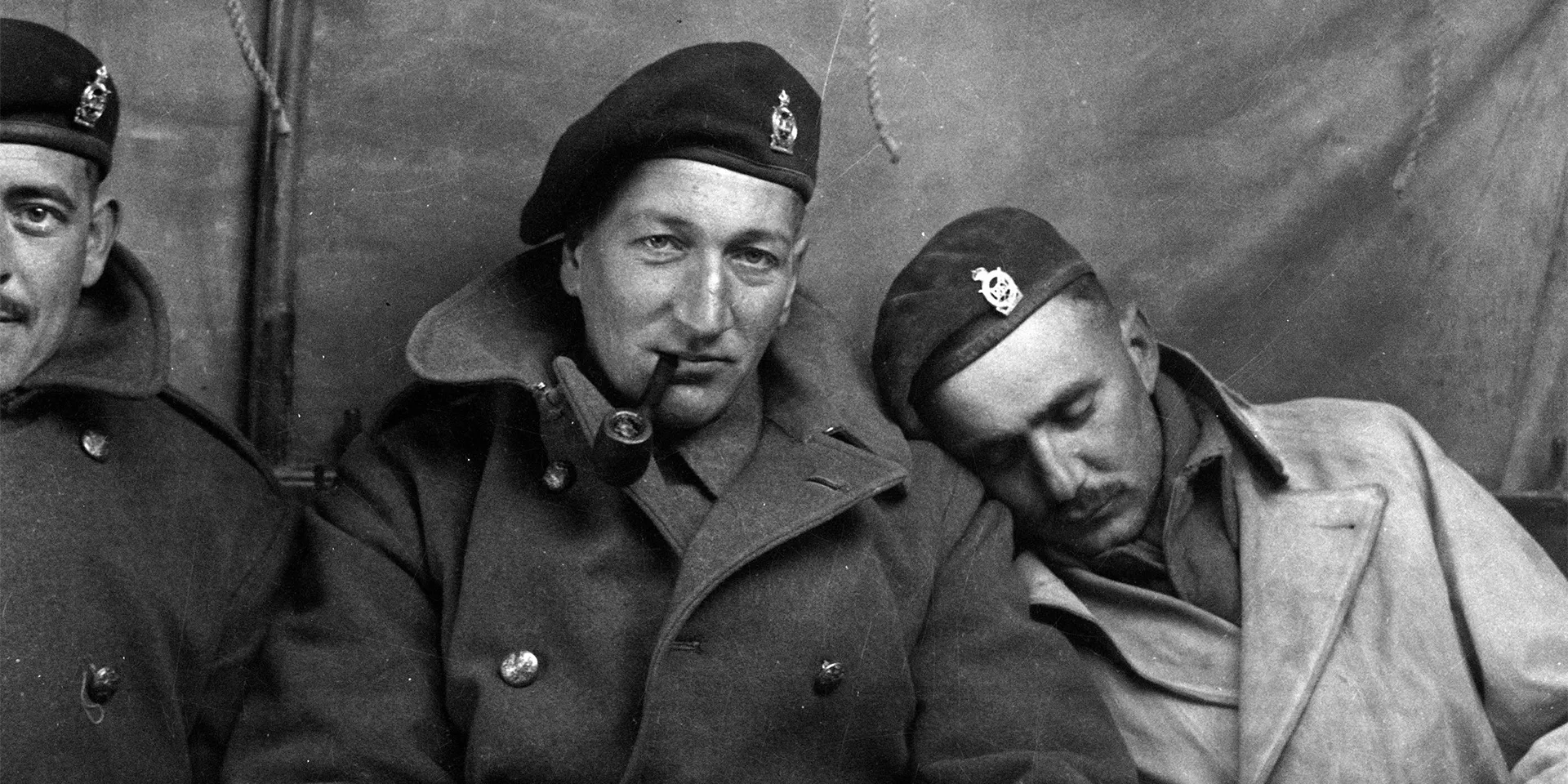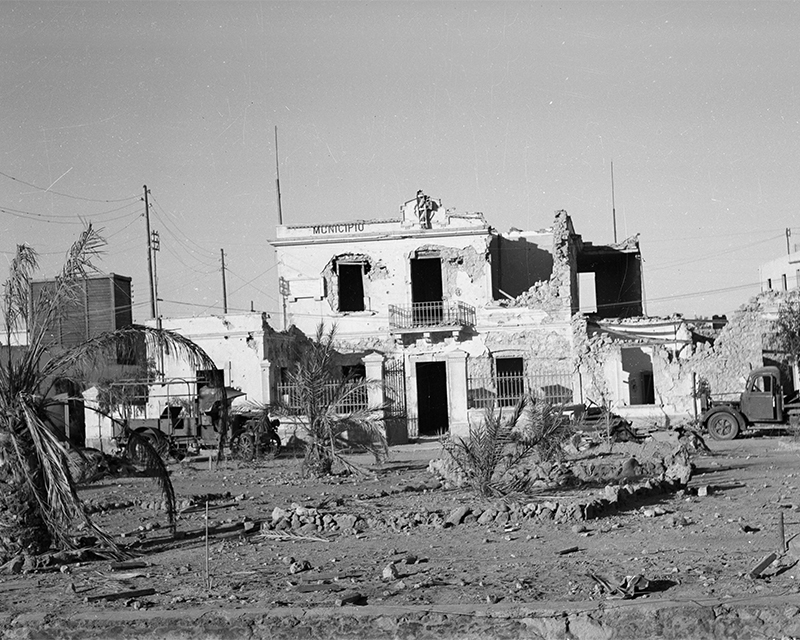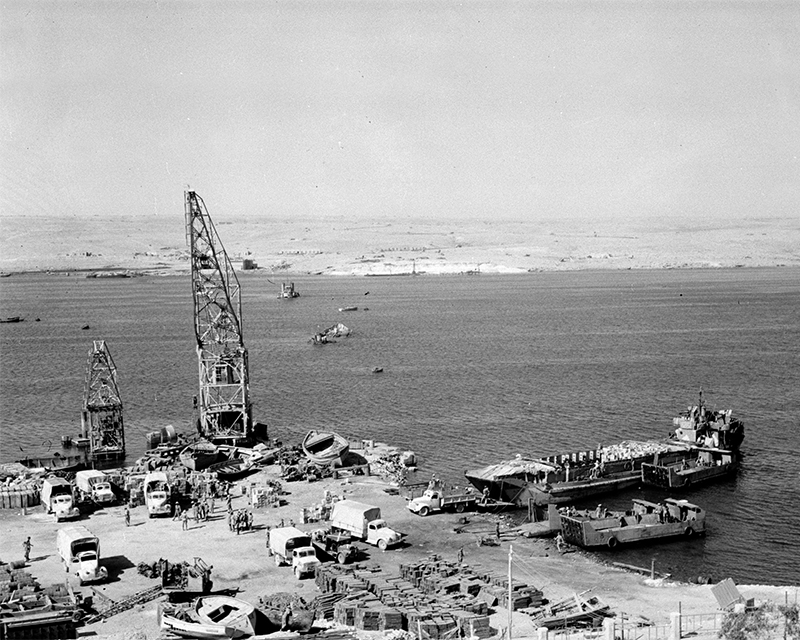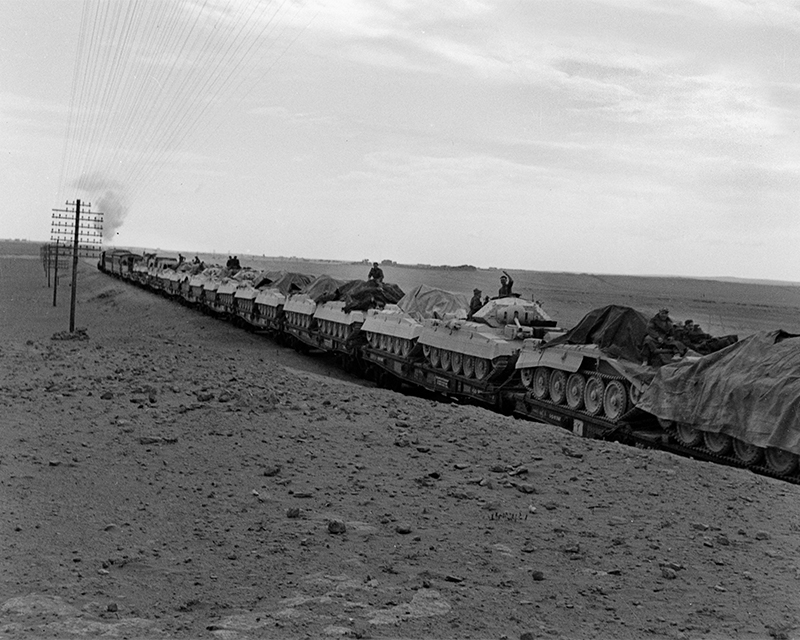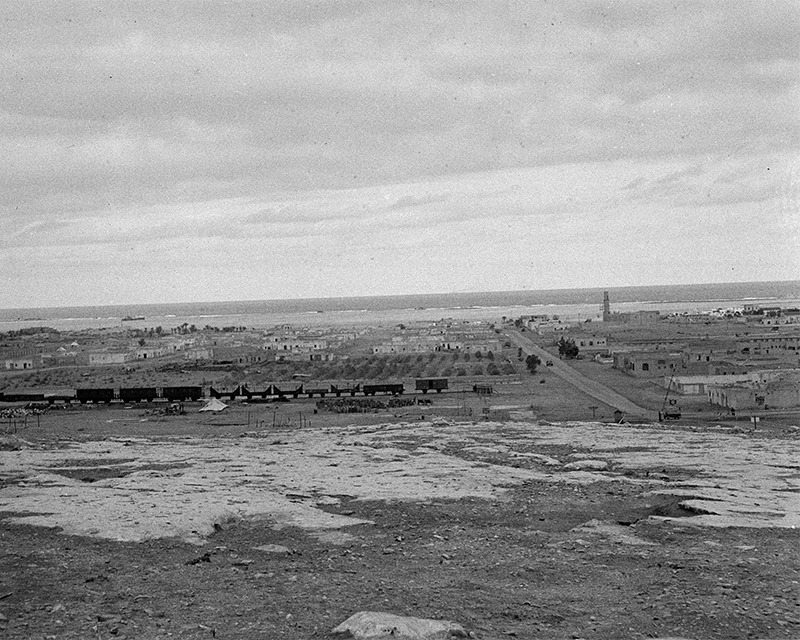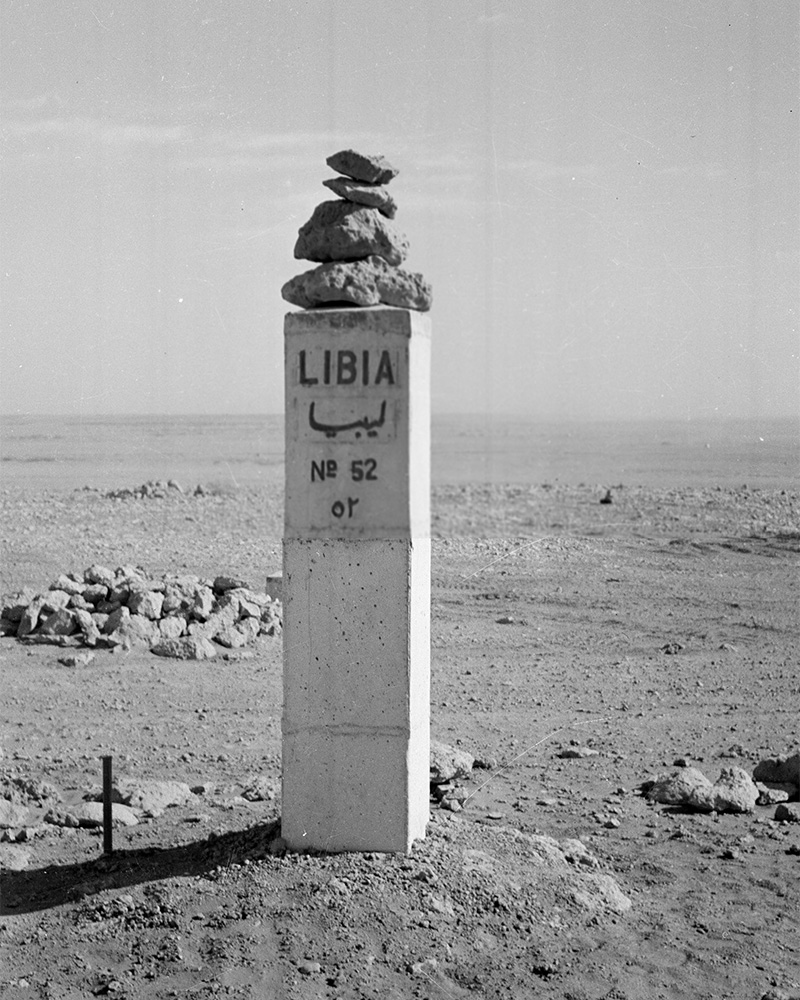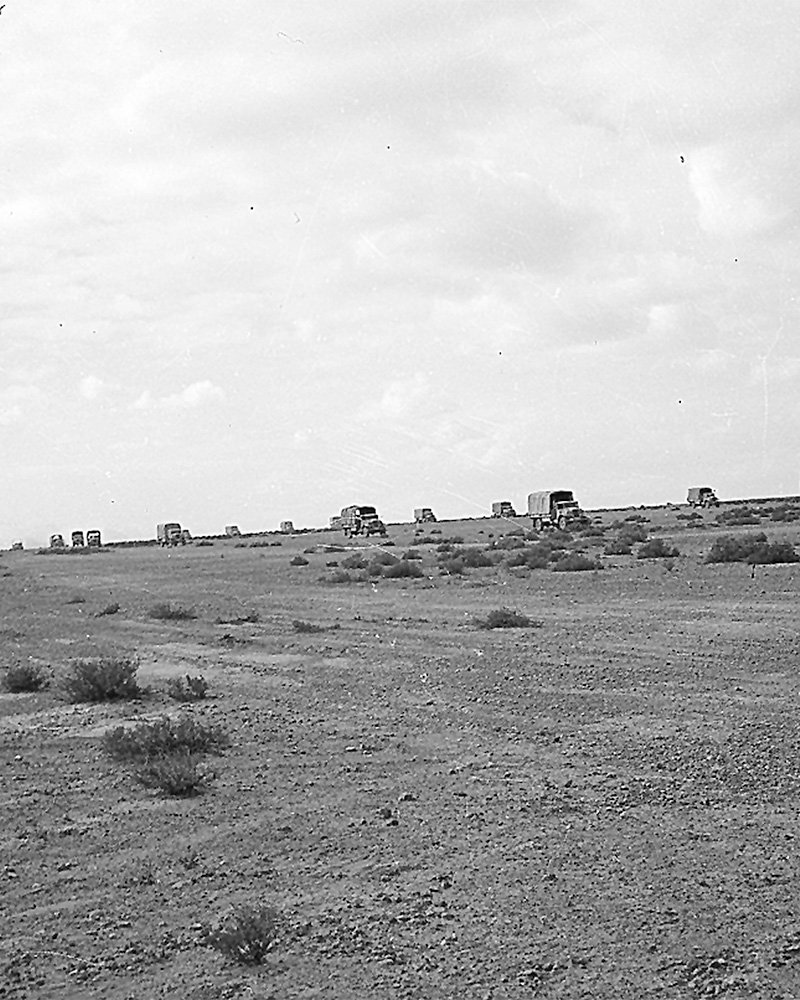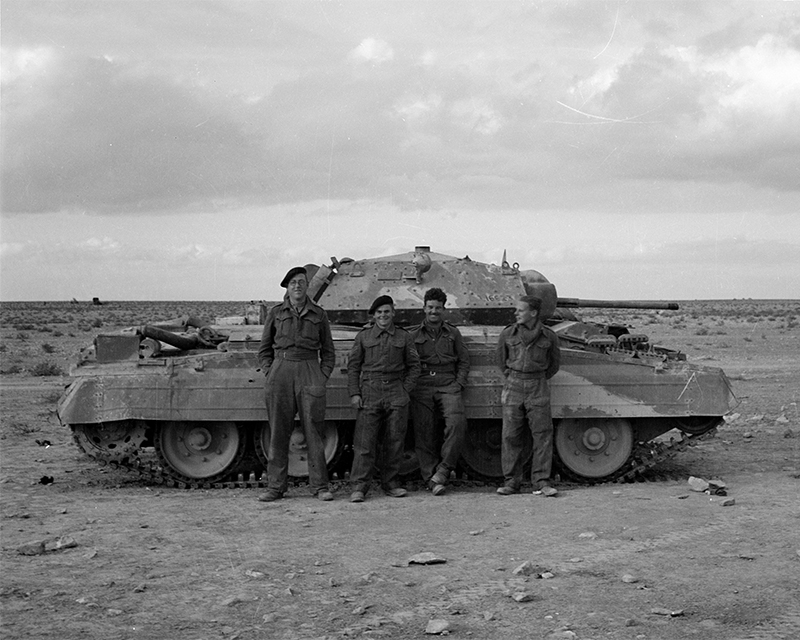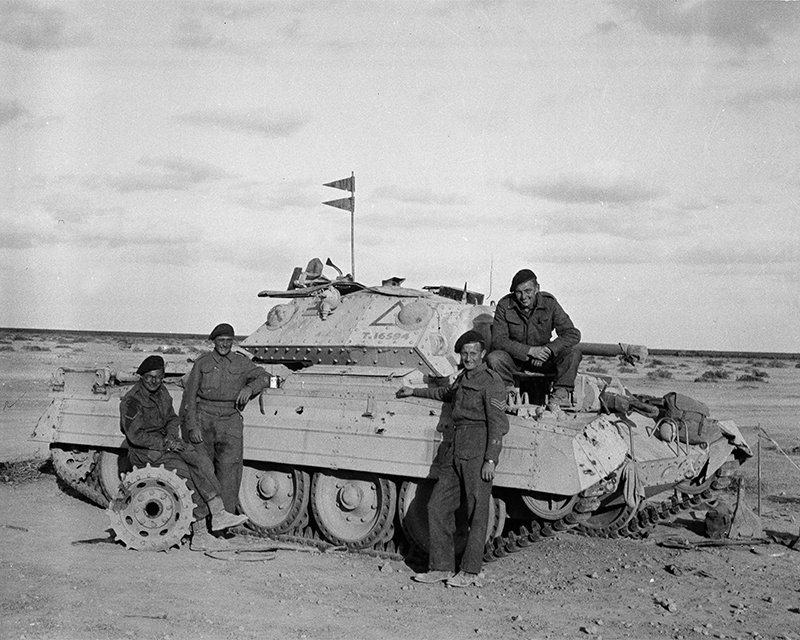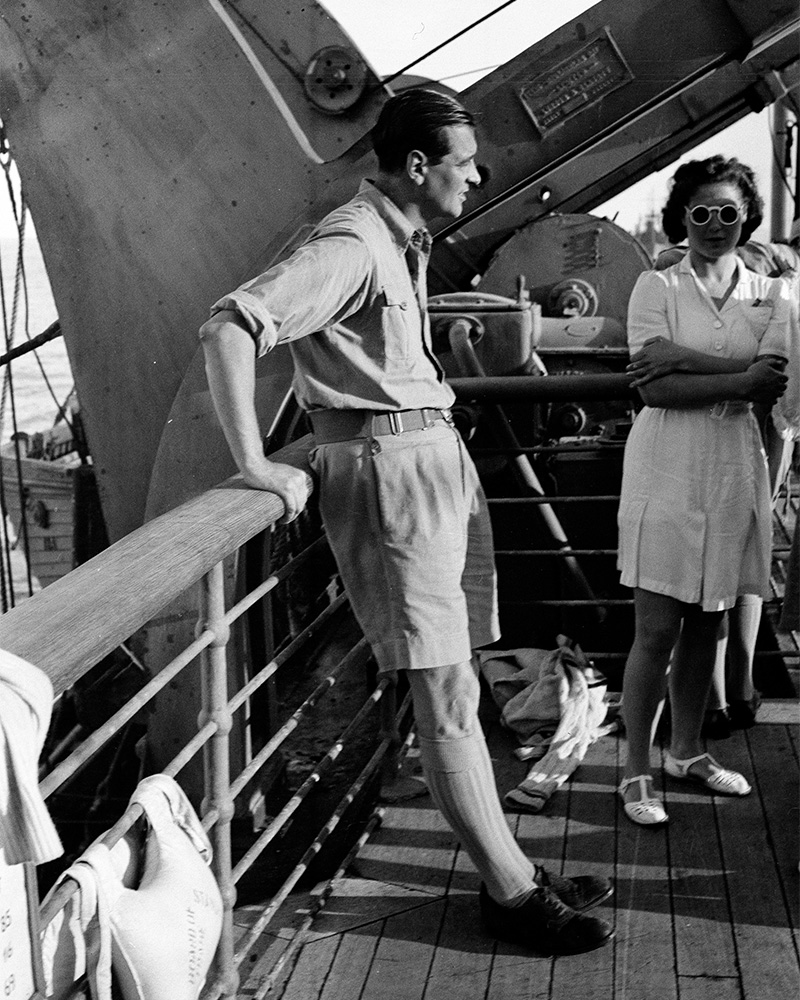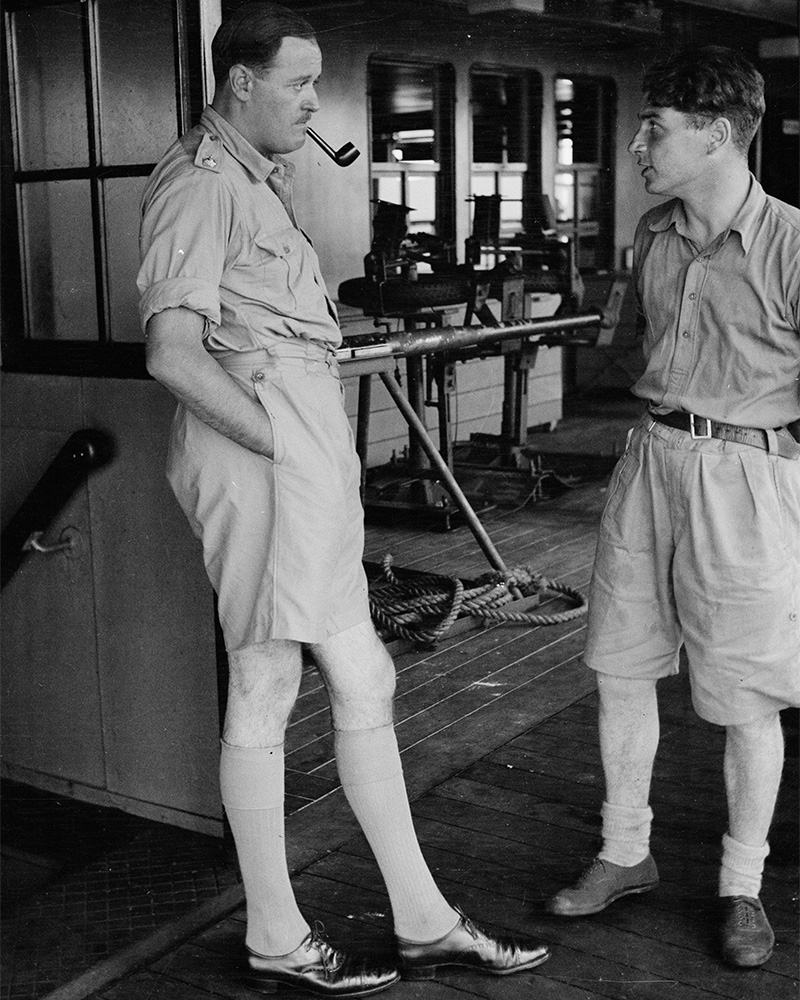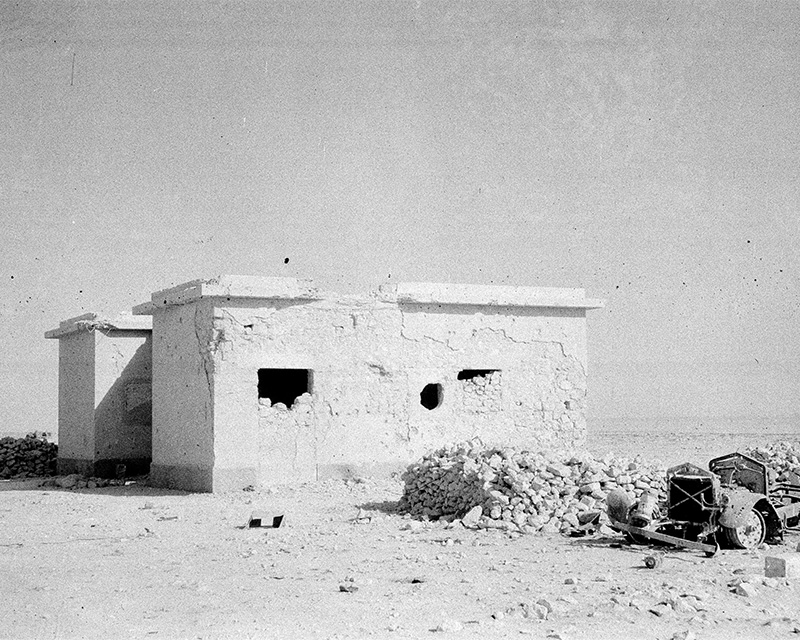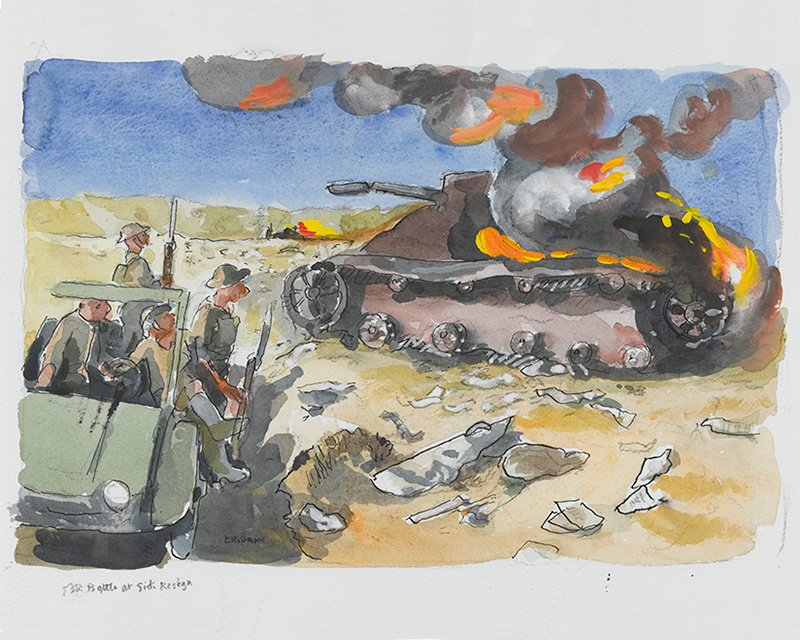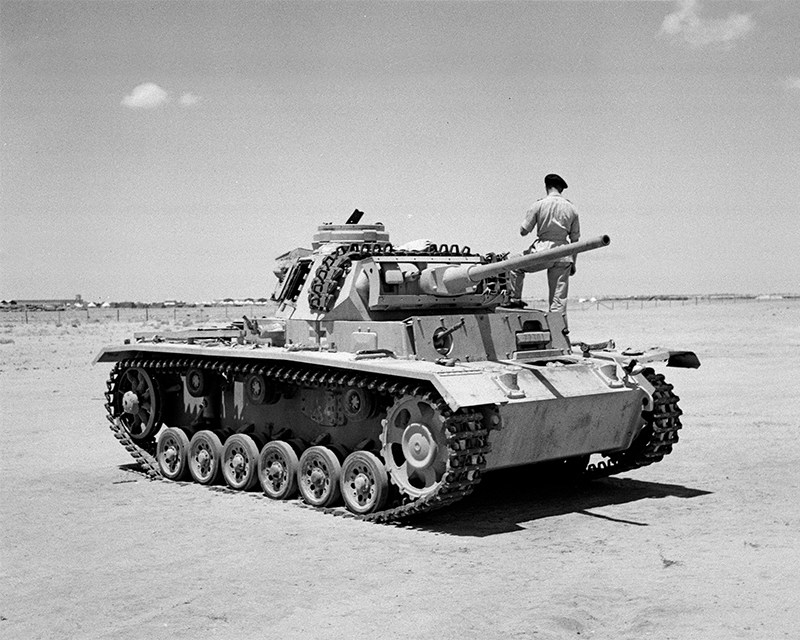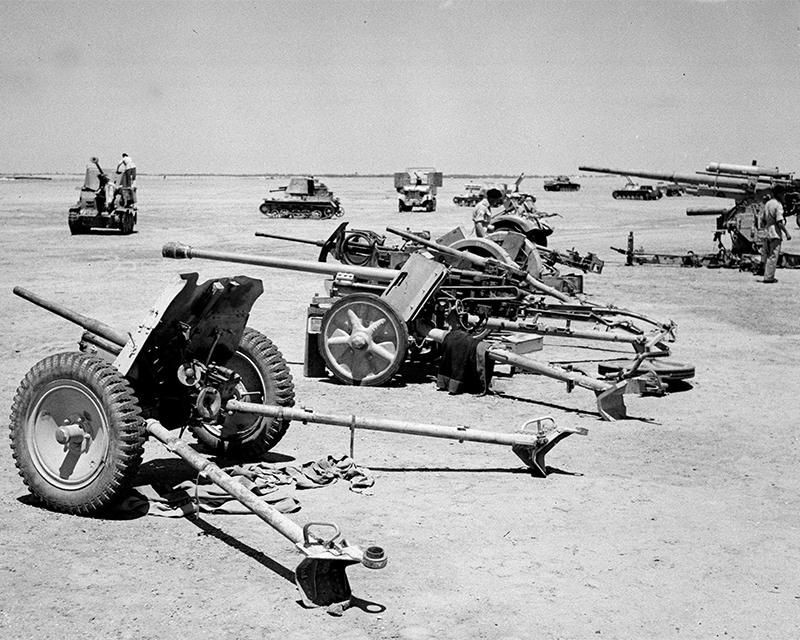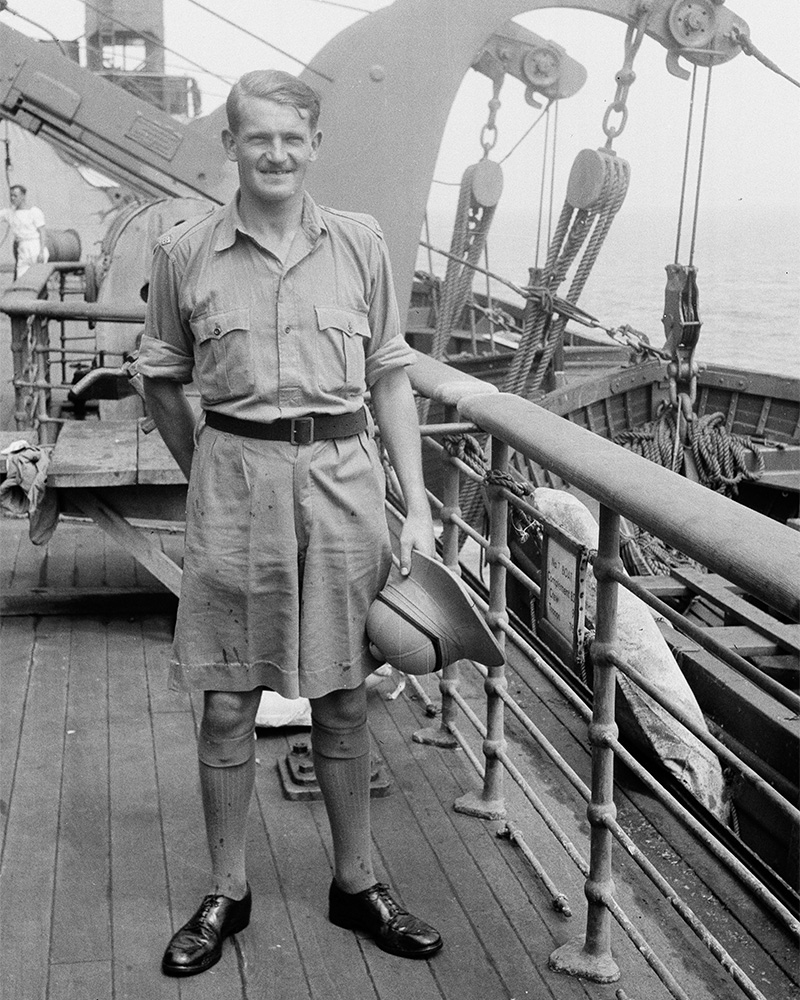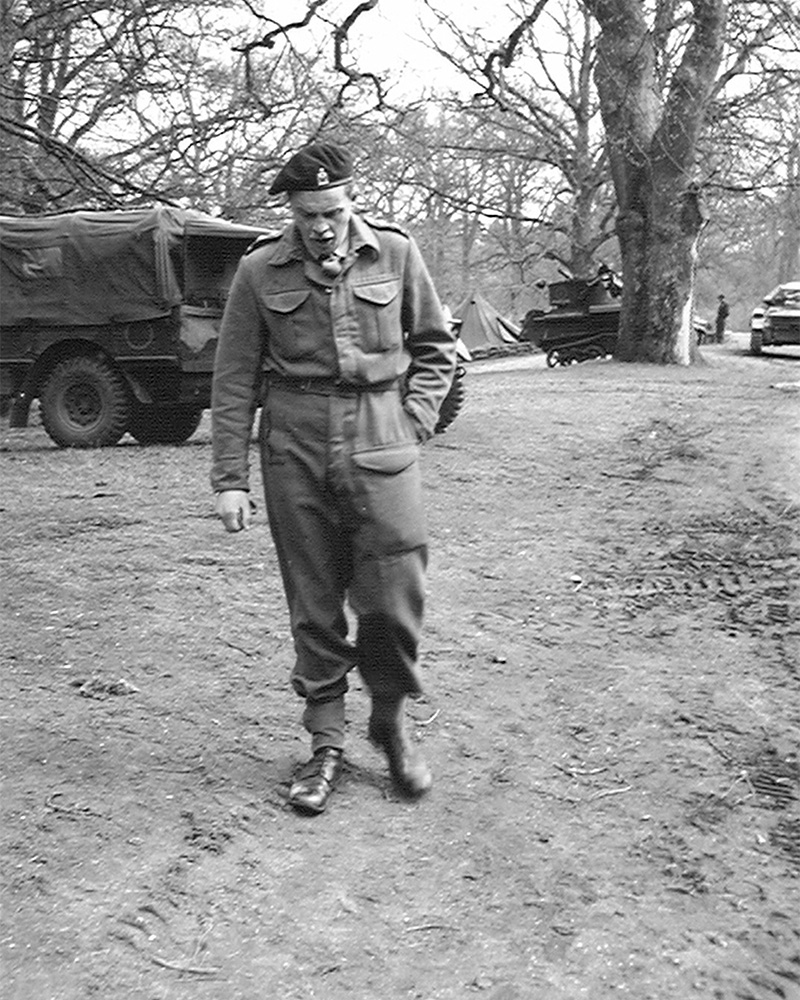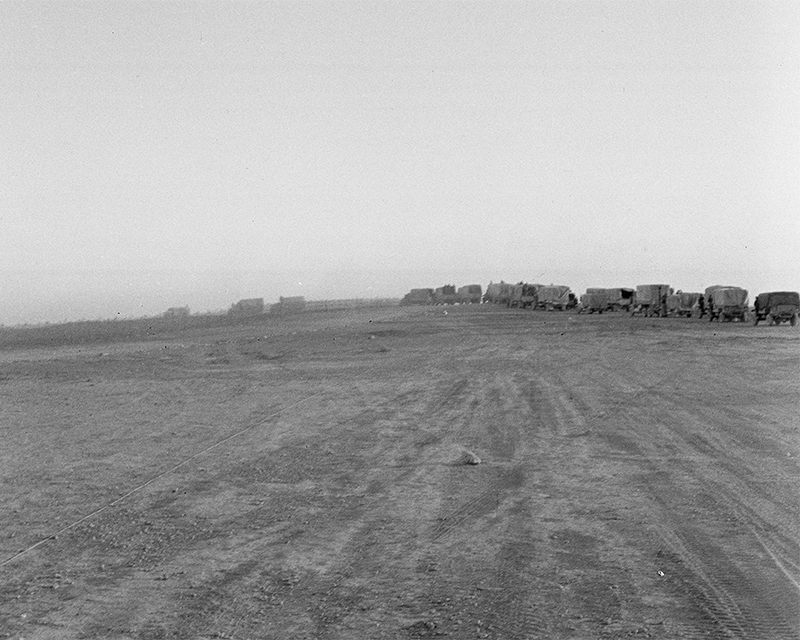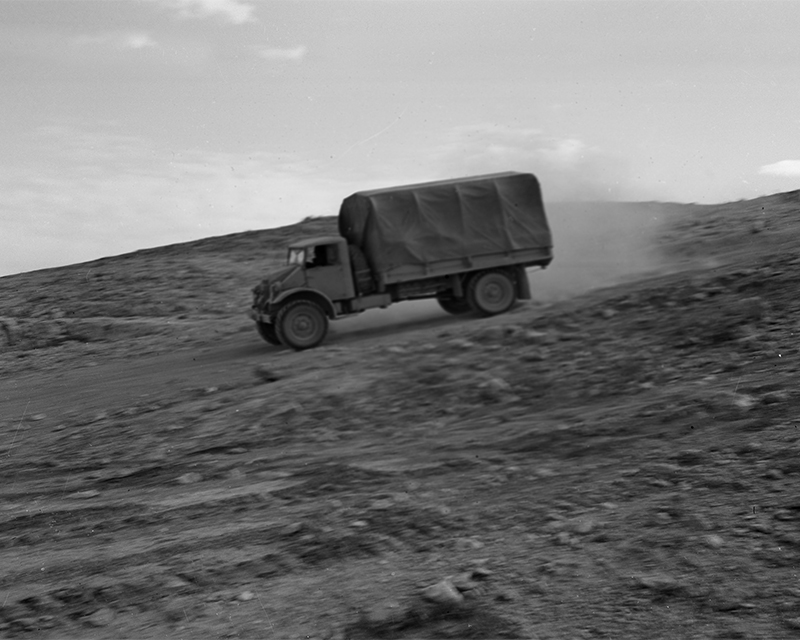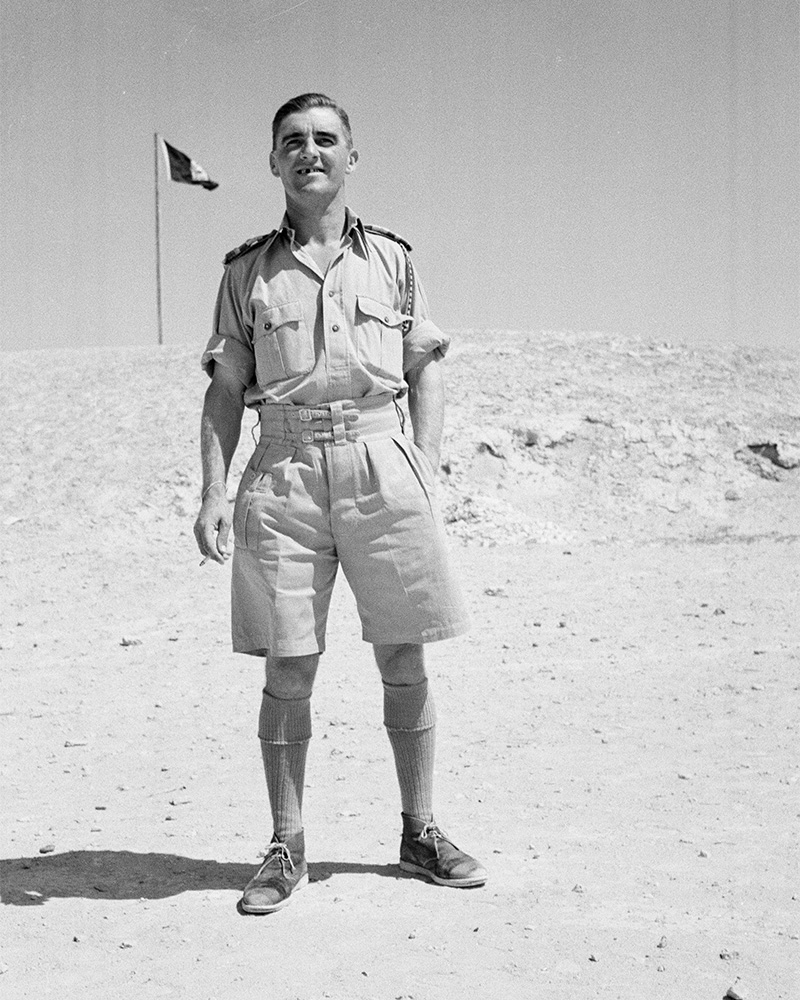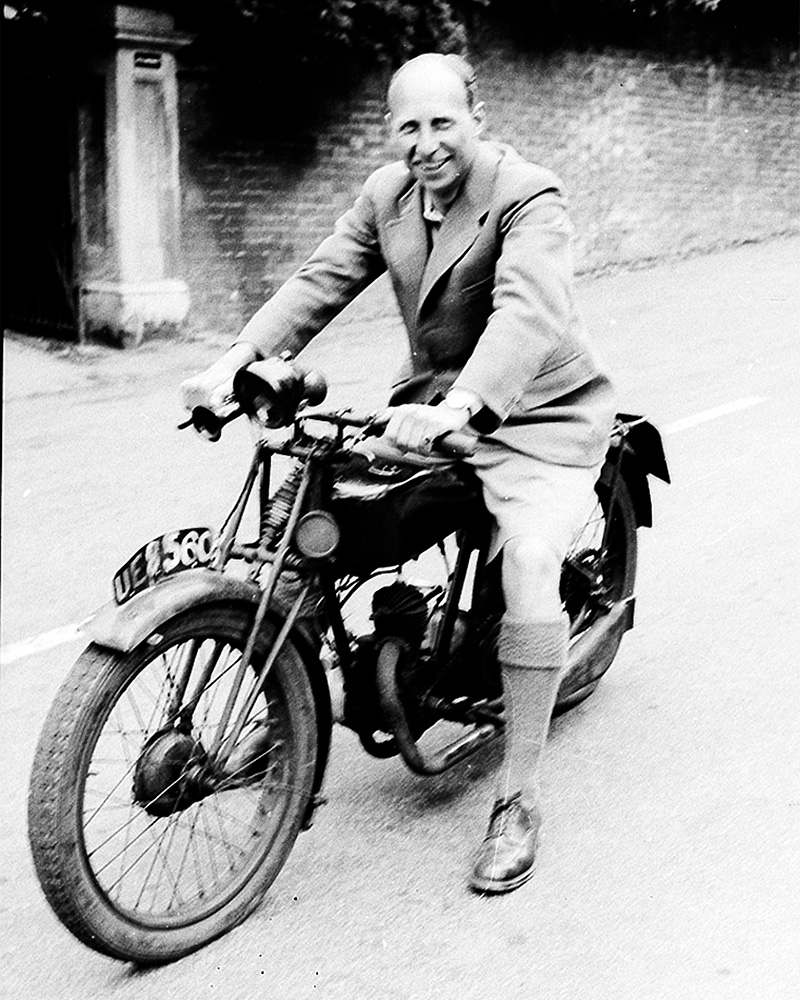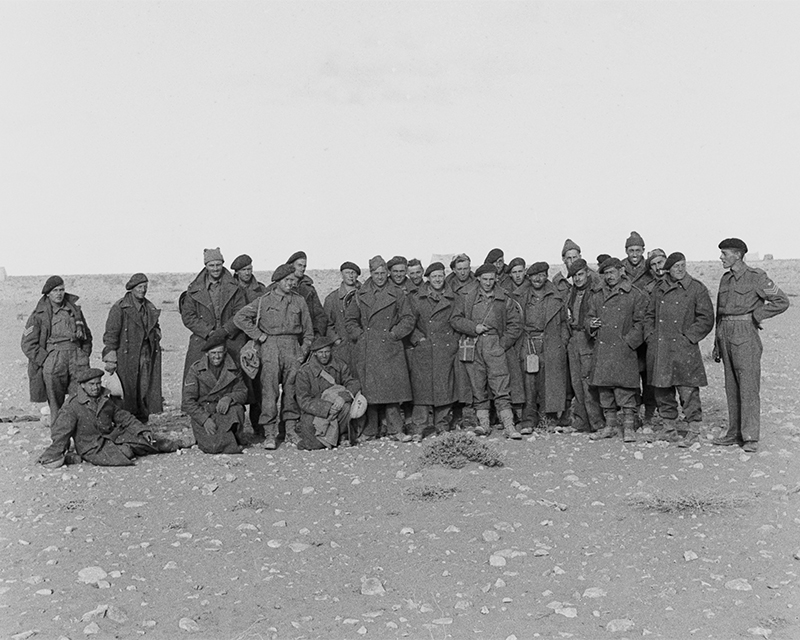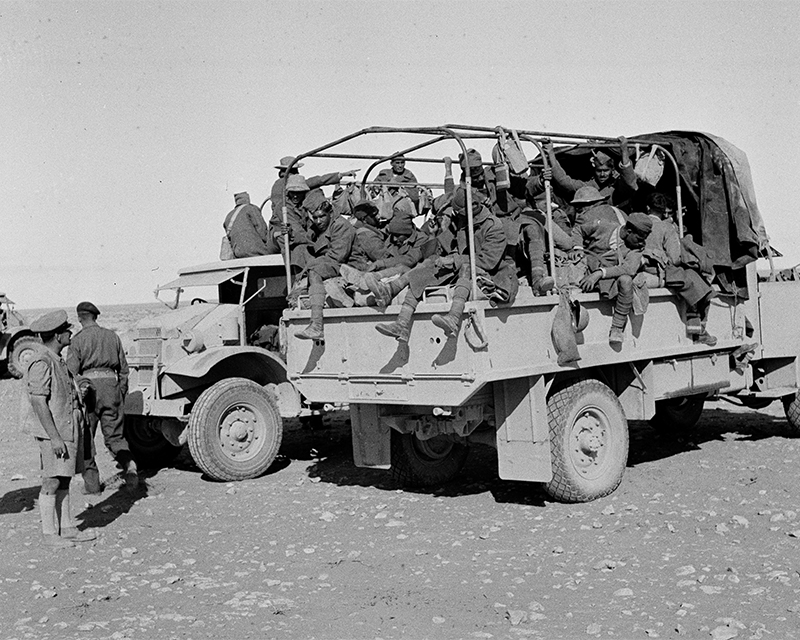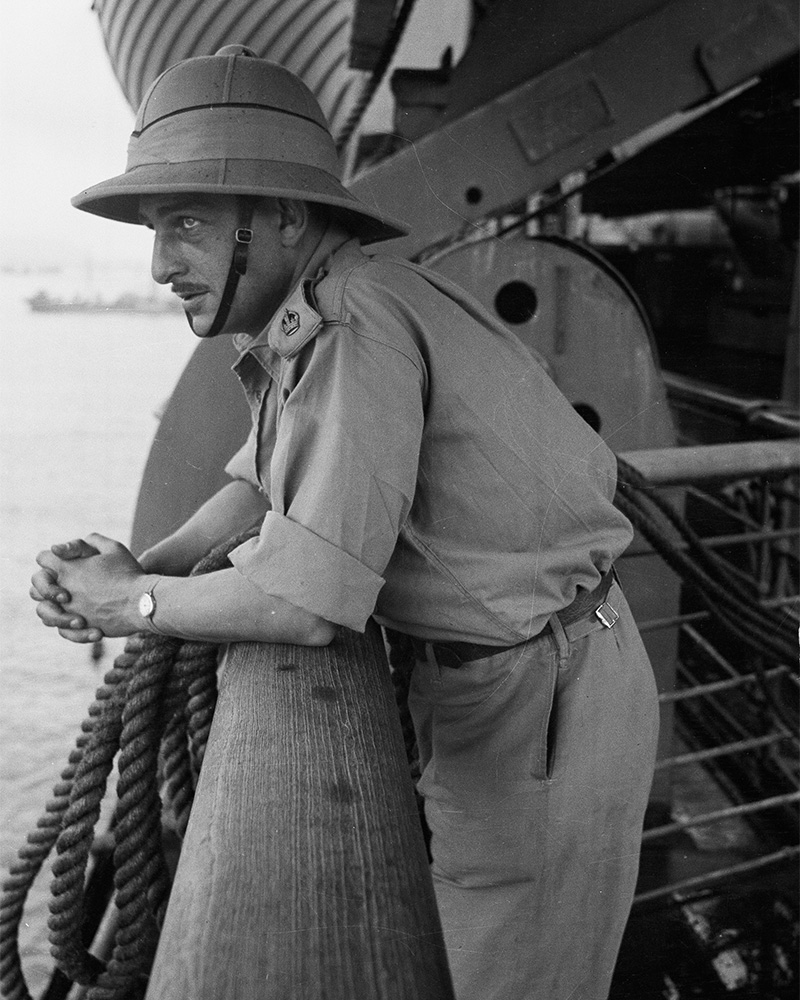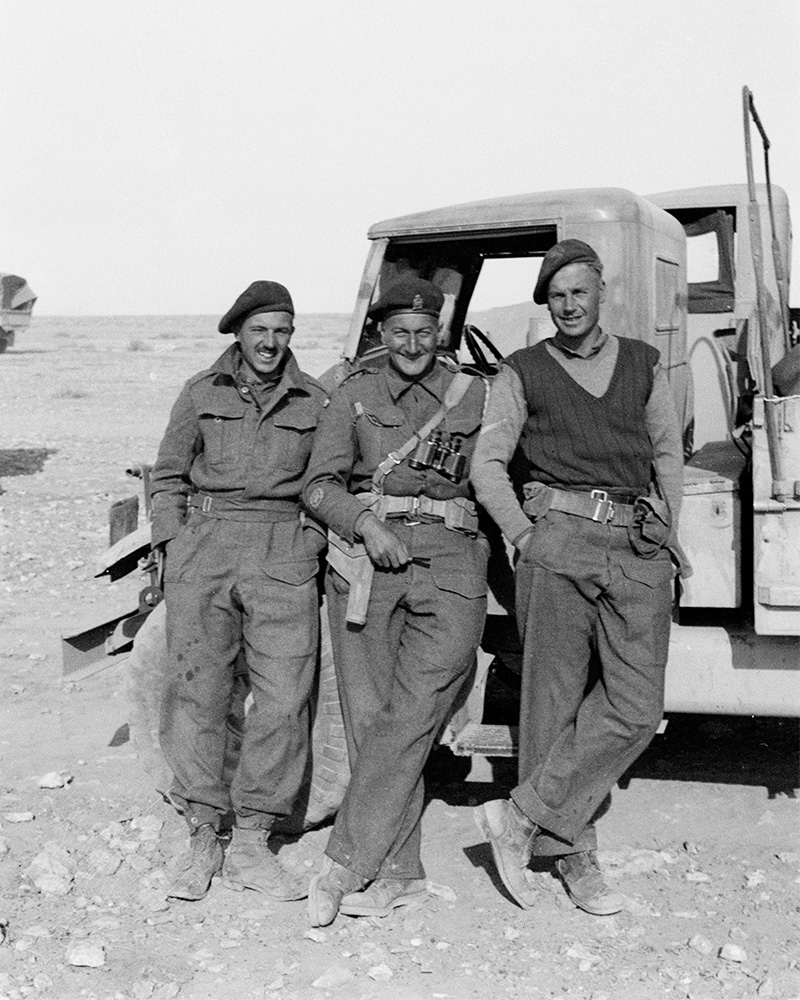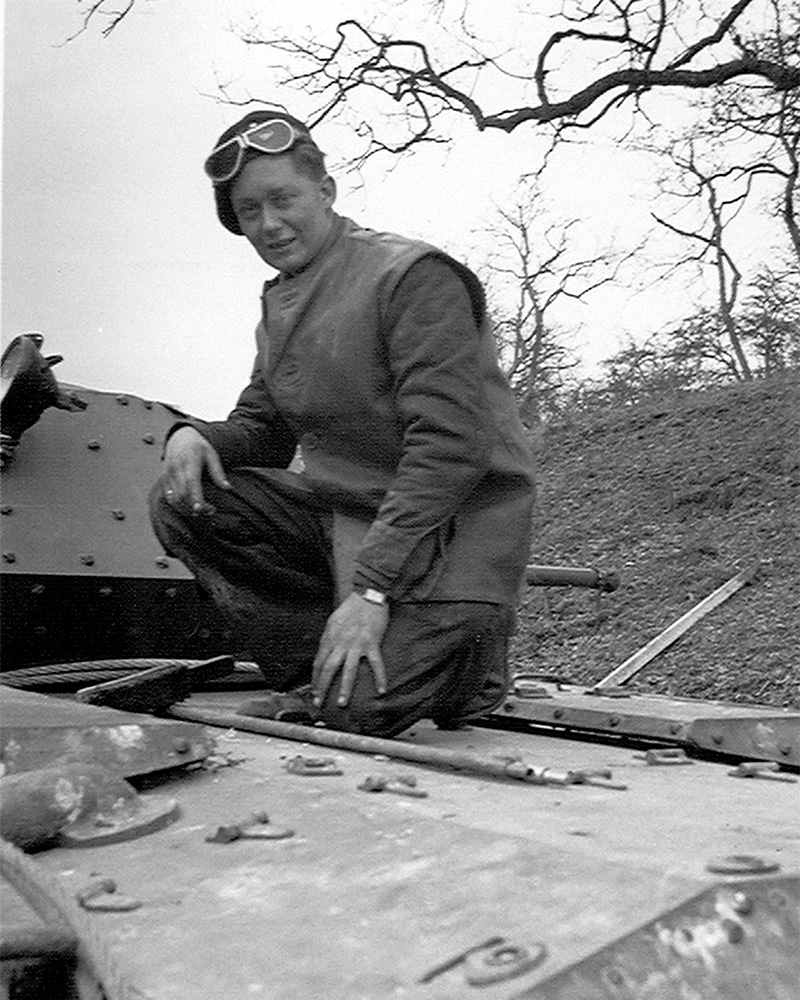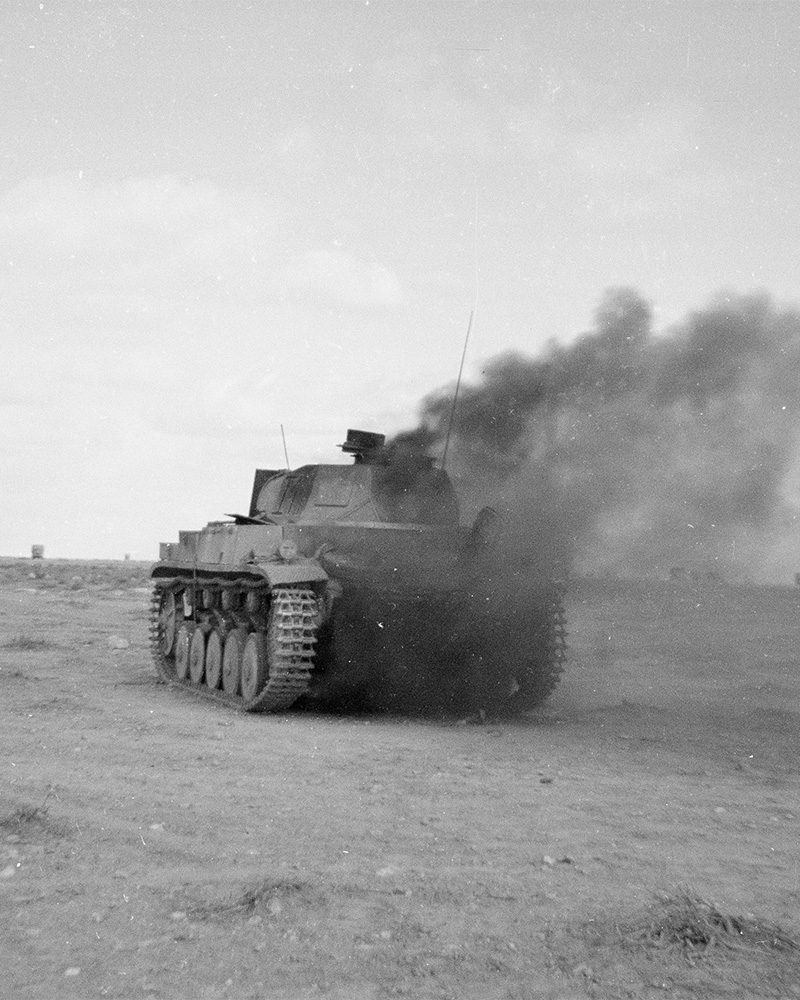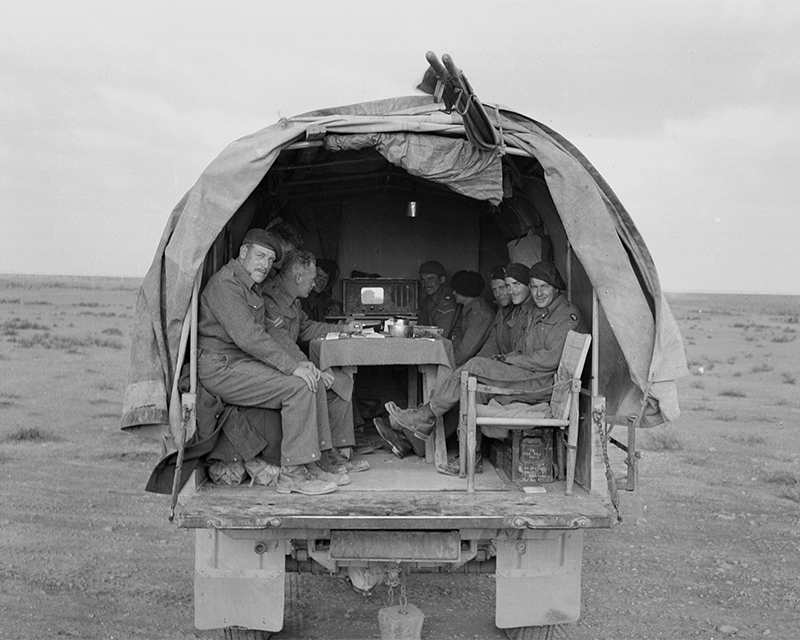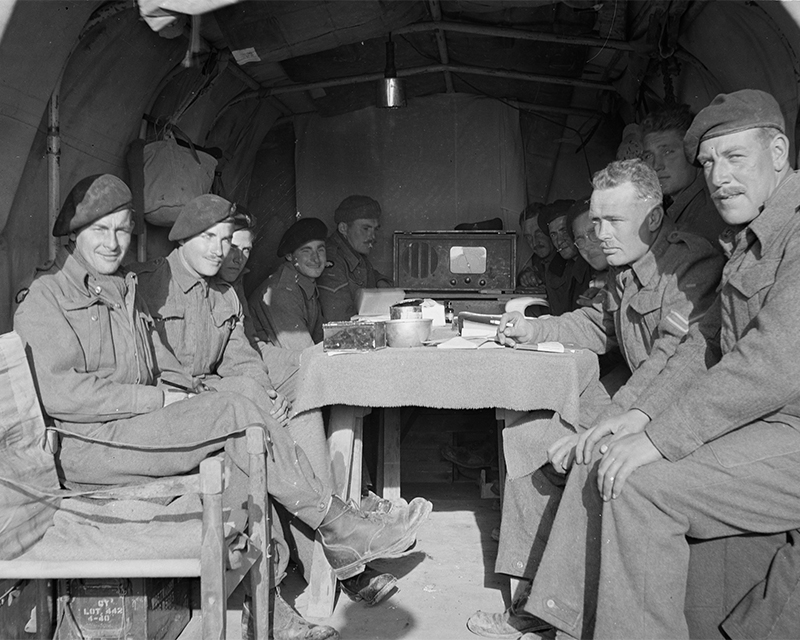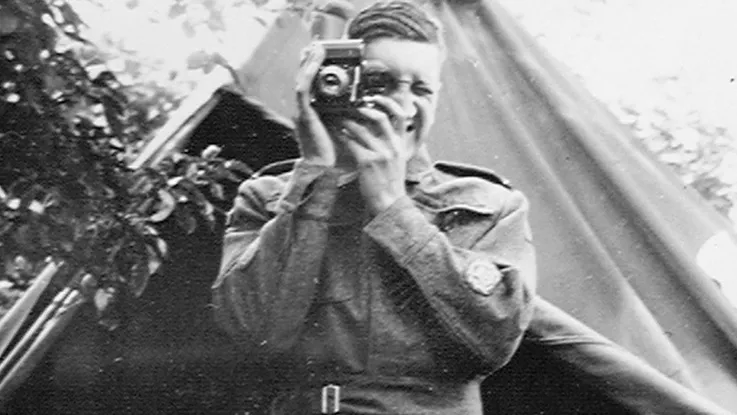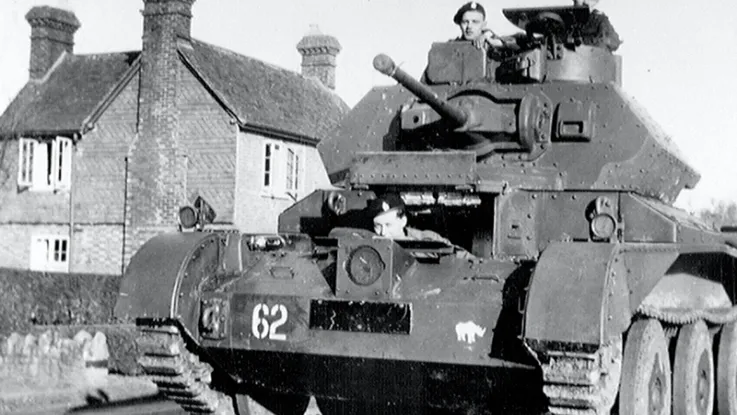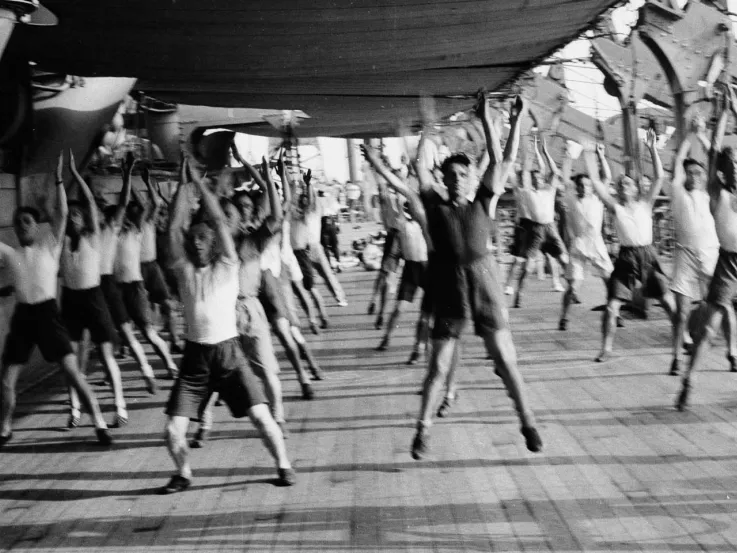Photographic records
Major ‘Jimmy’ Sale of the 3rd County of London Yeomanry (Sharpshooters) continued to use photography to document his unit’s wartime experiences during their service in North Africa from 1941.
As well as providing a unique record of events in the Western Desert, Sale's wartime portraits help to put faces to some of the names mentioned in the Sharpshooters’ war diaries and other accounts of the campaign.
Operation Crusader
After two failed attempts to oust Axis (Italian and German) forces from Libya in 1940-41, Prime Minister Winston Churchill urged General Sir Claude Auchinleck, the new British Commander-in-Chief Middle East, to mount a fresh offensive.
Auchinleck eventually launched Operation Crusader in November 1941, an attack he hoped would destroy the Axis armoured forces in North Africa once and for all.
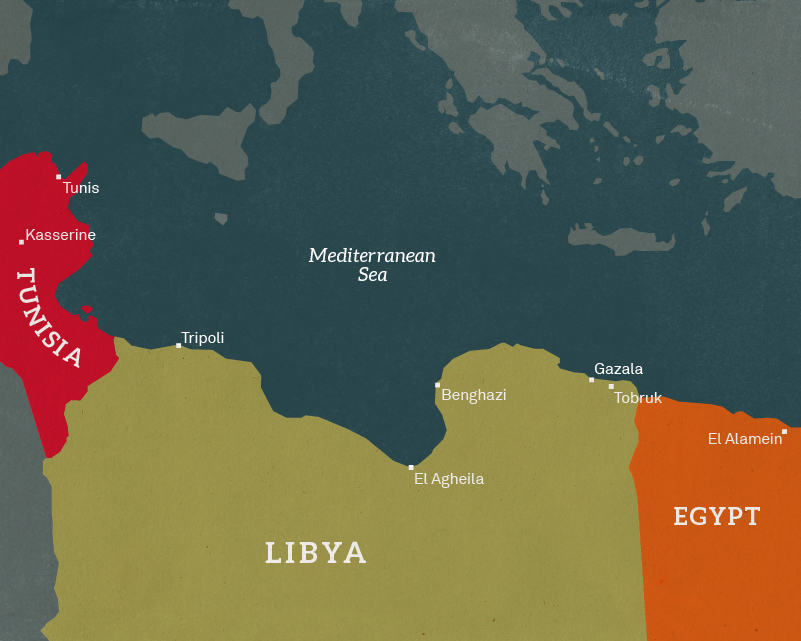
Map of North Africa, 1941
Formations
At the time, XIII Corps and XXX Corps were the main formations that made up the Eighth Army under the command of Lieutenant-General Sir Alan Cunningham. 7th Armoured Division, part of XXX Corps, included 22nd Armoured Brigade.
Major Sale’s unit, the 3rd County of London Yeomanry, was part of this as yet untested brigade, alongside the 4th County of London Yeomanry and the 2nd Royal Gloucestershire Hussars.
Baptism of fire
Operation Crusader had two main objectives. The first was to recapture Cyrenaica, a region in the east of Italian-controlled Libya. The second was to relieve the Allied garrison at Tobruk - a port city on Libya's Mediterranean coast - which had been under siege from Axis forces since 10 April 1941.
The men of XXX Corps were to attack in the south, XIII Corps in the north. The 7th Armoured Division was tasked with taking the airfields at El Adem and Sidi Rezegh.
After relocating from El Amirya near Alexandria to 7th Armoured Division’s positions on Egypt's border with Libya, the Sharpshooters made their final preparations for moving ‘up the Blue’, the slang for the desert front line. The 22nd Armoured Brigade, with the 3rd County of London Yeomanry on the right flank, crossed into Libya on 18 November 1941.
Although good progress was made, the initial advance across rough terrain took its toll on the Allied tanks and support vehicles. The war diary of the 3rd County of London Yeomanry records how mechanical breakdowns prevented the unit from refuelling on the night of 18 November.
Initial contact
The following day, elements of 22nd Armoured Brigade clashed with the Italian Arriete Division near Bir El Gubi. The 4th County of London Yeomanry and the 2nd Royal Gloucestershire Hussars mounted a spirited attack on the Italian positions, but their success was shortlived, lacking the necessary support from infantry and artillery.
Casualties mounted as the Italians fought back, with anti-tank guns disguised as trucks taking their toll on British tanks. ‘A’ Squadron 3rd County of London Yeomanry, led by Major Geoff Willis, knocked out five Italian tanks in a supporting attack. But ‘B’ Squadron, advancing to reconnoitre, suffered its first casualties to anti-tank fire.
Bloodied and battered
The Sharpshooters were bloodied and battered by their first combat experience. ‘B’ Squadron’s Major Richard Godson and his radio operator were wounded and lucky to survive when they received a hit to their already disabled tank’s turret.
Lieutenant John Holcroft and two of his crew - Trooper Donovan Mammen and Corporal Ernest Dixon - were killed when their tank was hit at close range. Holcroft’s driver survived and managed to drive the tank out of danger.
Fuel shortages resulted in more vehicles being abandoned, but the Sharpshooters made every effort to recover tank crews and salvage what they could. The attack at Bir El Gubi stalled and the British forces withdrew to defensive positions for the night.
Sidi Rezegh
On 20 November, the two Sharpshooter regiments were in action again as the 22nd Armoured Brigade’s advance continued north-east towards Sidi Rezegh in support of Allied units already in action there. Sidi Rezegh was important because of its airfield and a nearby ridge that dominated the Trigh Capuzzo highway and the Axis forces besieging Tobruk.
The Germans now began to manoeuvre their forces, finally realising that the Allied operation was not just a reconnaissance but a full-scale offensive. The 15th and 21st Panzer Divisions advanced towards Sidi Rezegh that night and engaged Allied troops there.
On 21 November, the Sharpshooters arrived in Sidi Rezegh and found the airstrip and surrounding desert littered with wrecked aircraft and burning vehicles. For the first time, they encountered German Mark III and Mark IV tanks, which outgunned and outranged their A15 Crusader tanks. As with their earlier encounter with the Italians, the British tank crews again fell victim to accurate anti-tank fire from the towed and self-propelled guns supporting the German battle tanks.
Casualties that day included Second Lieutenant John Bay, aged 26, of 3rd County's ‘C’ Squadron, who was later buried at the Knightsbridge Cemetery at Acroma in Libya.
Further casualties
On 22 November, the Sharpshooters engaged German forces and fought until dark to control the ridge near Sidi Rezegh. The unit sustained further casualties including Captains Stanley Reddish and Colin Scott-Moncrieff, both recorded in the 3rd County of London Yeomanry’s war diary as ‘missing and not heard of again’.
The two officers are both listed as killed on 22 November 1941 by the Commonwealth War Graves Commission, along with Troopers Andrew Stewart, Charles Croker-King and William Smart from the same unit.
Desperate measures
By now, 22nd Armoured Brigade had lost so many tanks that a composite force of surviving vehicles had to be created under the command of Lieutenant-Colonel William Carr, Commanding Officer of 4th County of London Yeomanry. The unit was positioned to defend the left flank of the 5th South African Brigade.
On the afternoon of 23 November, the Germans launched an attack which aimed to encircle and crush British and Commonwealth forces in the area. The attack took the Allies by surprise and a chaotic struggle developed. The composite force of the Sharpshooters and the Royal Gloucester Hussars was in the thick of what became a desperate fighting withdrawal by the surviving Allied units.
Several Sharpshooters received awards for their actions that day, notably Lieutenant Bowling-Smith of the 3rd County of London Yeomanry, who received the Military Cross for continuing to operate the guns of disabled tanks to cover the withdrawal.
‘Echelon Stakes’
On 24 November, the surviving tanks of the composite force regrouped. However, a German counter-attack created havoc as Allied supply columns were caught up in the battle.
The County of London Yeomanry regiments each had two supply units, known as ‘A’ and ‘B’ Echelons. The ‘B’ Echelons for the whole brigade were on the move south-east when they were caught in the open by the German armoured forces.
In an action subsequently referred to as the ‘Echelon Stakes’, the Allied vehicles scattered, but over 200 soldiers were captured. Among the prisoners from 3rd County of London Yeomanry were Major Charles Rich, commander of ‘B’ Echelon, Captain Gavin Carew and Quartermaster Lieutenant Murdie Andrews.
Prisoners of war
The prisoners were driven off in lorries and unceremoniously dumped at a desert camp with just two guards. They quickly persuaded their captors to surrender, then split into two groups and took off on different escape routes. The party including Major Rich and the County of London Yeomanry was eventually rescued by Indian soldiers and returned to their brigade.
Although unconfirmed, it appears that Jimmy Sale was among those temporarily held prisoner by the Germans as he appears in a photograph with two other soldiers captioned, ‘after their escape’. The episode illustrates perfectly the fluidity and confusion that existed during this period of desert warfare.
The fighting continues
Over the next few days, the composite force positioned east of Sidi Rezegh helped to blunt the German move to outflank and halt the Allied advance on Tobruk, which was continuing to the north.
According to the unit’s war diary, while engaging German armour on 27 November on the Trigh Capuzzo highway, the 3rd County of London Yeomanry knocked out two German tanks and one artillery piece at the cost of two of their own tanks. During this action, Sergeant Douglas Clancy, aged 23, was killed.
Lieutenant-Colonel Carr was wounded and replaced as commander of the 22nd Armoured Brigade composite unit by Lieutenant-Colonel RK ‘King’ Jago of the 3rd County of London Yeomanry. Injured when his tank was involved in a collision on 28 November, Jago was replaced by Major Kitson of the 4th County of London Yeomanry, with Major GGL Willis commanding the remnants of the 3rd County of London Yeomanry.
Withdrawal
At the end of November 1941, the Sharpshooters were withdrawn, refitted and reorganised. The following month, elements from the two regiments took part in harassing attacks on the Axis forces.
The German commander Erwin Rommel eventually withdrew his forces and the 22nd Armoured Brigade, supplemented with much-needed artillery and infantry, was involved in the pursuit westwards. Christmas Day was celebrated in the Libyan desert.
Recovery
As the year ended, the Germans’ fighting withdrawal resulted in another tough action for the Sharpshooters at Belandah. Following further losses to combat and mechanical breakdown, the majority of what remained of the 3rd and 4th County of London Yeomanry was withdrawn back to Egypt to recover and regroup.
The gaps in their ranks needed to be filled, and their vehicles and equipment required repair or replacement in preparation for a return to the front line. Their struggle with Rommel’s Afrika Korps would resume in May 1942.

